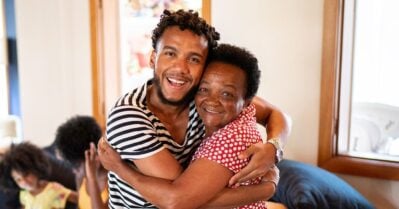What Works Better Than Incarceration to Get Kids Back on Track

The research is clear: Detention and harsher sentences for youth do not reduce crime. Instead, they cut young people off from supportive relationships and often make communities less safe. Support, not punishment, helps youth thrive and keeps communities safer.
For more than 35 years, the Annie E. Casey Foundation has worked to transform the youth justice system, studying what works and what doesn’t. Science and practice point to the same truth: Children are different from adults. Adolescents are still developing, and their brains are wired for risk-taking and pushing boundaries. Traditional approaches — incarceration and surveillance-heavy probation — often clash with normal development and can push young people deeper into the system instead of helping them mature. What works? Strategies that help young people become productive adults and contribute to safer communities.
Investing in Adolescent Development
Central to understanding how to respond to juvenile crime is a growing body of science on adolescent brain development. Adolescence is a window of brain development as powerful as that of early childhood. Young people are figuring out who they are and who they want to be as they build life skills, like how to make important decisions and assume responsibility. Their minds are ready to learn, adapt, explore and discover.
When young people have guidance, mentoring and supportive relationships to navigate this stage of life, they are far more likely to succeed. Approaches that emphasize rewards and incentives for doing well, rather than punishment for every misstep, align with what we know about the adolescent brain’s responsiveness to positive reinforcement.
Communities across the country are applying this research to redesign probation systems. In Pierce County, Washington, home to Tacoma, Opportunity-Based Probation has replaced punitive, rule-heavy supervision with incentive-based approaches. Probation officers and families set weekly goals and reward progress. This positive model has led to fewer violations, fewer new arrests and more youth on track — exactly what communities want.
Addressing Adolescent Trauma
Developmentally appropriate responses must also address trauma. More than half of justice-involved youth have experienced trauma, including hunger and exposure to violence in their families or communities.
Traumatic experiences can have profound effects on young people, including:
- difficulty trusting people;
- feelings of hurt, rage and sadness;
- directing that hurt at themselves and others; and
- difficulty imagining the future, let alone planning for it.
That’s why it’s essential to involve families — the most consistent and trusted support in a young person’s life. Family engagement is one of the strongest predictors of youth success, yet families are too often sidelined in the justice system. When parents and caregivers are involved in case planning, youth outcomes improve. Strong family connections give youth a sense of belonging, accountability and resilience — the very anchors that confinement disrupts.
When young people act out due to trauma, pain and unmet needs, treatment and supportive relationships are more effective than surveillance and incarceration. The latter responses only exacerbate the trauma and behavior and impede necessary healing.
Replacing Punishment With Opportunity
Some jurisdictions are taking bold steps to replace punishment with opportunity, and the results are promising. In Harris County, Texas, home to Houston, a shuttered detention center has been transformed into The Opportunity Center, which provides job training, mental health care and after-school programs. By replacing punishment with opportunity, the community has created safer neighborhoods and stronger families.
Young people themselves are also leading change, helping communities reimagine probation from the ground up. In six states — California, New Mexico, Kansas, Indiana, Mississippi and New Jersey — young people who were once on probation were hired and trained to conduct focus groups with and survey other young people and families who have experienced probation. Their efforts to find out what is and isn’t working in youth probation and share these findings with youth justice practitioners, advocates and policymakers demonstrate what science confirms: Young people can grow, change and lead when given the chance.
Connection Over Condemnation
What works to get young people back on track are strategies rooted in adolescent development, such as positive reinforcement, connections to consistent, caring adults and opportunities to learn and lead. For young people to thrive, we need to respond more effectively when they make mistakes and cause harm. If we want safer communities and better futures, we must invest in approaches that help young people reach their potential — not policies that condemn them to punishment without opportunity.
When young people’s potential, talents and skills are fully realized, our families and communities are stronger and safer.




 Joseph Ribsam
Joseph Ribsam


